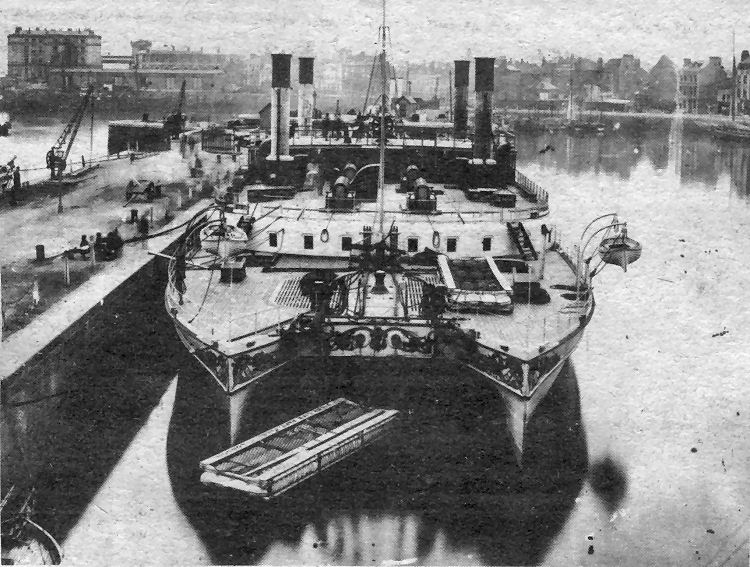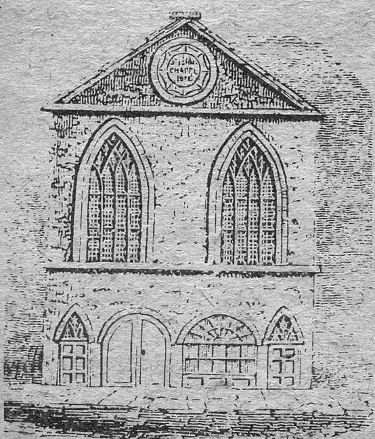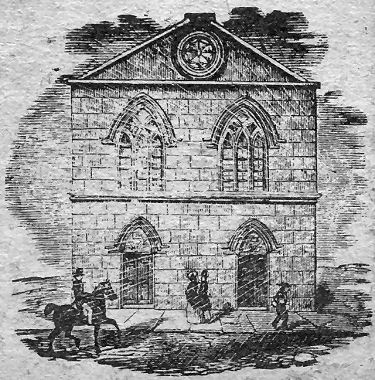Page Updated:- Sunday, 07 March, 2021. |
|||||
 Published in the South Kent Gazette, 23 April, 1980. A PERAMBULATION OF THE TOWN, PORT AND FORTRESS. PART 77.
ORIGIN OF STROND STREET About that time, a canal was made along the present site of Strond Street, for the two-fold purpose of opening a way for ships passing up into the Great pent, and also to conduct a current of water to clear the entrance of Paradise harbour. That method of sluicing proving ineffectual, in the course of a few years Paradise Dent waa choked with beach, and the canal being disused, was also filled up, eventually being transformed into Strond Street. By that time James I had succeeded Queen Elizabeth, and Great Paradise, as the essential part of Dover harbour, had succeeded Little Paradise. At that time, Great Paradise was an enclosed tidal harbour, occupying the site of the present Granville Dock and a part of the outer harbour, Strond Street, as its name implies, being the inland margin, the land sloping down from the street to the water over the present site of Custom House Quay.
CUSTOM HOUSE QUAY The formation of the thoroughfare known as Custom House Quay, dates from about the year 1670, when certain individuals, who had acquired leases of the land on the eastern side of Strond Street, built houses and warehouses there, constructing in front of them quays, which they claimed as their private property. For instance, there was, in the year 1676, a quay, somewhere towards the Hotel de Paris, named James Hammond’s quay, adjoining that gentleman’s house; and along the line of Custom House Quay there were also quays owned by Mr Brinder, Major Braems, and Mr John Matson. In course of time, these private quays came under the control of the Harbour Commissioners, and the road along them became public. When Strond Street was carried down to the Crosswall, Elizabeth Square was formed on the northern side of Paradise Pent and was made a junction therewith.
ELIZABETH STREET Of Elizabeth Square, there is nothing left but its history. The name Elizabeth Street was eventually given to the street that came into existence when the London and Chatham Railway Company, in the year 1860, selected the north side of Queen Elizabeth Square for its terminus station. The property on the south side has, in the course of the past 200 years been used for various purposes. The Wesleyans had a place of worship there, dating from 1789, and after they moved in 1834 to Snargate Street Chapel the building was bought by the Roman Catholics, and was their place of worship until St Paul’s Church was opened in Maison Dieu Road in 1868. The Jews also used to have a place of worship in this street and the late Mr Robert Shignell established, about 1883, a Working Men’s Club Room on temperance principles, but it ceased to exist many years ago. In 1907, Elizabeth Street contained three public houses, a mineral water manufactory, one private residence, an ice store, and the offices of the Clyde Shipping Company. Of the public houses, the “Shakespeare“ Inn was the last to survive. The “Lion“ went when the Viaduct was built, and when Limekiln Street was widened the "Kent Arms“ at the Elizabeth Street corner disappeared. When the Clyde Shipping Company ceased coming to Dover their offices became a shop. Elizabeth Street continued into Clarence Place before the Dover and Deal Railway was made across it about 1880. From then until the building of the Viaduct there were level crossings and bridges which gave access to Strond Street and to Clarence Place. These level crossings have long since disappeared. Some of the arches beneath the old Viaduct were put to good use, a number of businesses being operated in them. One housed a sub-station for the Electricity Undertaking, and was utilised to convert alternating current into the direct current used on the electric cranes on the Admiralty Pier. Between a turning off Elizabeth Street called Water Lane and Hawkesbury Street stood the old Holy Trinity Boys’ and Girls’ C. of E. Schools, which survived until recent times and served as a reminder of the time when the Pier District was crowded with houses. The Schools were built in 1847 by voluntary subscriptions and grants from Societies on ground presented by Mr D. W. Minet and enfranchised by the Harbour Board. They were enlarged in 1854 and 1867, being then almost entirely rebuilt by Mr Adcock. An infants’ department was included in the school till the Dover Education Authority provided an infants’ school at Archcliffe Road in 1912.

Anyone contemplating a Channel crossing in the paddle steamer era was very much concerned with seasickness. It was such a problem that a number of men set to work to design vessels to hopefully solve the problem. One such “solution“ was this striking vessel, a massive catamaran type paddle steamer, called the Castalia, pictured at the Cross-wall. It was designed during his years of retirement at Walmer by Captain W. Dicey, R.N., and arrived at Dover in September 1874. It had two highly ornamented half hulls with the paddle-wheels in between. Her trial trip was delayed until 20th July 1875 when she crossed to Calais in an hour and 50 minutes. Proving slow she was fitted with new boilers and other alterations were made to improve performance but, although she proved popular with passengers she did not solve the problem of “mal de mer“ and consumed too much fuel. Eventually her owners, the English Channel Steamship Company went into liquidation. More successful, but still rather slow, was a similar vessel, the Calais-Douvres which appeared on the Dover-Calais run in 1878 and remained in service until 1887.
 
Two views of the interesting St. John’s Chapel or St. John’s Mariners’ Church, as it was sometimes known. It was built in 1823 and stood near the National Sailors’ Home, in Blenheim Square, pictured in a previous illustration. It is seen left, in an 1841 print, in what was probably its original form and right, with two doors only, as later altered. The second picture is from an original wood block engraving and close examination will show the grain of the hard wood. The chapel was at one time used by the Rev VV. S. Cole, minister of Holy Trinity Church and later for 22 years by the Rev William Yate who, sometime after January 1867, carried out various improvements.
|
|||||
|
If anyone should have any a better picture than any on this page, or think I should add one they have, please email me at the following address:-
|
|||||
| LAST PAGE |
|
MENU PAGE |
|
NEXT PAGE | |